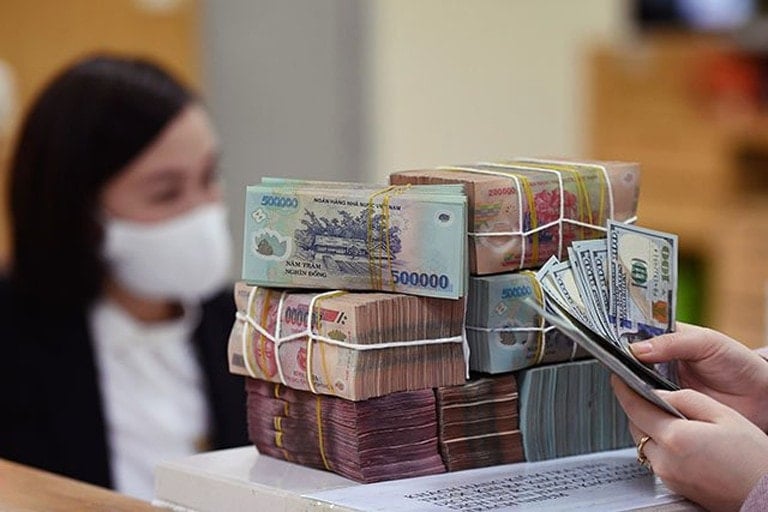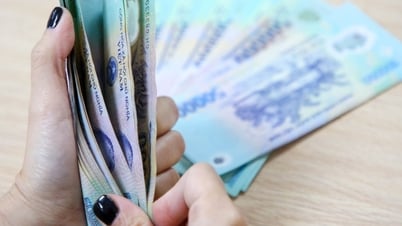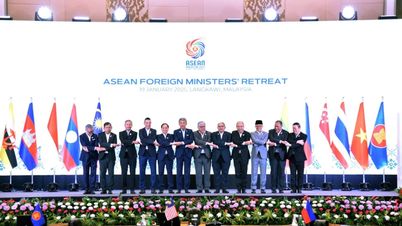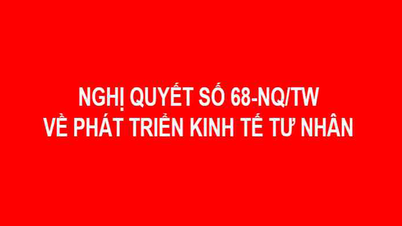Cash dividend payments by banks are at risk of being tightened when the new Circular on capital adequacy officially takes effect. Only banks that fully meet capital standards will be allowed to continue paying cash dividends.
Banks spend thousands of billions of dong to pay dividends
In May and the second quarter, the market witnessed a series of banks announcing plans to pay cash dividends at rates ranging from three to twenty-five percent of par value. The total amount paid to shareholders amounted to tens of thousands of billions of VND.
According to statistics, at least ten commercial banks have paid cash dividends this year. Among them, LPBank stands out with a payout ratio of twenty-five percent, equivalent to two thousand five hundred dong per share. With nearly three billion shares in circulation, this bank will pay out about seven thousand four hundred and sixty-eight billion dong to shareholders, leading the industry in terms of payout scale.
Several other banks such as VPBank , TPBank and VIB have also announced plans to pay cash dividends at rates of five percent, ten percent and seven percent respectively. VIB has maintained its tradition of paying dividends in both cash and shares for many years, except for the three-year period affected by the pandemic. This year, VIB spent more than VND2 trillion to pay dividends and issue shares at a maximum rate of fourteen percent to increase charter capital.
This year also marks the third consecutive year that VPBank has paid out cash dividends, with a payout ratio of five percent, equivalent to approximately four trillion VND. Similarly, TPBank continues to pay dividends in both cash and shares for the third consecutive year. The bank has set aside more than two trillion six hundred billion VND to pay out cash dividends at a rate of ten percent and issue shares at a maximum rate of five percent. According to TPBank's leadership, this policy reflects a stable financial situation and aims to increase shareholder benefits.
Previously, since 2020, the State Bank has begun to tighten the payment of cash dividends to prioritize resources for increasing capital, handling bad debts and supporting the reduction of lending interest rates. The exception only applies to state-owned banks such as Vietcombank, BIDV and VietinBank at the request of the State Treasury.
By 2023, the regulator will loosen regulations and allow high-rated banks to pay cash dividends, while encouraging priority to pay dividends in shares to improve financial capacity, stabilize interest rates and support credit growth. This is the basis for banks to return to paying cash dividends after many years of only issuing shares.
The return to cash dividend payments shows that the bank's financial health has improved significantly, and is also a move to appease shareholders in the context of unpredictable market fluctuations. For long-term investors, cash dividends are always a priority thanks to their stability and clear profitability. According to VPS Securities Company, banks that regularly pay cash dividends often have a solid financial foundation, are transparent and attractive to investors.

Tightened capital requirements, cash dividends narrowed
A new circular issued by the State Bank of Vietnam in 2025 requires banks to focus on increasing their internal capacity, instead of prioritizing cash dividends. In the context of increasingly strict Basel II and Basel III standards, only truly healthy banks are eligible to pay profits to shareholders. The new policy shifts from relaxation to screening, putting the high dividend expectations of many investors at risk of not becoming a reality.
From September 15, commercial banks and foreign bank branches will only be allowed to distribute profits in cash if they maintain adequate capital adequacy ratios and buffers. Banks that fail to meet the requirements will be banned from distributing cash dividends.
Specifically, banks without subsidiaries must maintain a core capital ratio of four-point-five percent, a tier-one capital ratio of six percent, and a minimum capital adequacy ratio of eight percent. If they have subsidiaries, they must comply with both the individual and consolidated ratios. In the case of an insurance subsidiary, even if the financial statements are not consolidated, the bank must still take into account credit risk, operational risk, and market risk.
In addition to the current criteria, banks must also implement a roadmap to increase the capital conservation buffer from zero point six percent in the first two years to two point five percent after four years. This means that by the year two thousand twenty-nine, to be eligible for cash dividends, banks need to achieve core capital of seven percent, tier one capital of eight point five percent and capital adequacy ratio of ten point five percent.
Furthermore, if they are classified as systemically important banks, they must also maintain a countercyclical capital buffer of zero to two-point-five percent or higher as required.
To meet these standards and expand operations, many banks have recently been actively increasing their charter capital. As of early 2025, the total charter capital of twenty-eight commercial banks reached more than eight hundred and twenty-three trillion VND, equivalent to thirty-three billion US dollars, an increase of fifteen percent compared to the end of 2023. The number of banks with charter capital of over one billion dollars has increased from twelve to fifteen, of which the group of private joint stock banks has grown strongly.
For example, NCB aims to increase its charter capital to more than nineteen trillion VND in 2025. This plan has been approved by the State Bank. NCB has also attracted seventeen professional investors, including some existing shareholders.
As for KienlongBank, this bank plans to increase its capital from VND3,652 billion to VND5,822 billion. Previously, KienlongBank proposed to double its charter capital to VND7,268 billion through stock dividends and offering to existing shareholders, but the plan was not approved at the shareholders' meeting in April.
Source: https://baolamdong.vn/co-tuc-tien-mat-thu-hep-truoc-suc-ep-an-toan-von-383195.html


























![[Photo] Signing of cooperation between ministries, branches and localities of Vietnam and Senegal](https://vphoto.vietnam.vn/thumb/1200x675/vietnam/resource/IMAGE/2025/7/24/6147c654b0ae4f2793188e982e272651)









































































Comment (0)